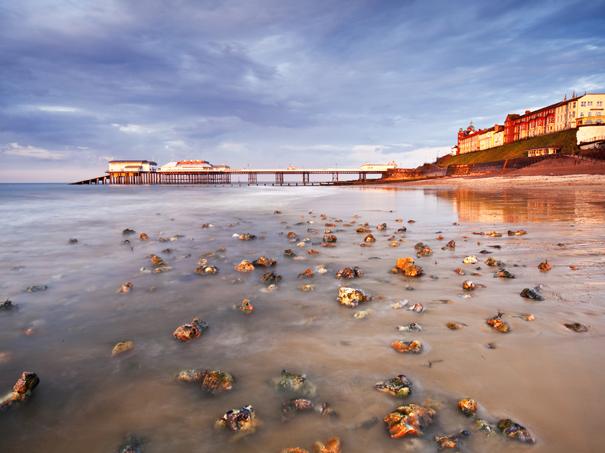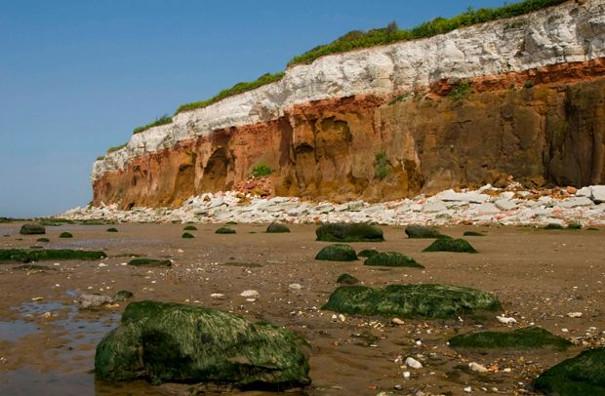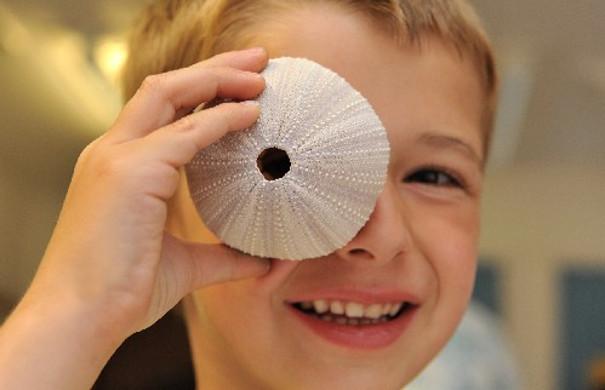With 45 miles of coastline, much of which is part of the Deep History Coast, north Norfolk is ideal for exploring coastal rock pools and beachcombing. You never know what you’ll discover!
You can rock pool at any time of the year and discoveries can be anything from marine wildlife to amber, to fossils millions of years old! Several important finds have taken place in north Norfolk, including some of the earliest evidence of human British civilisation discovered in Happisburgh, with footsteps left by the UK's first tourists nearly one million years ago. The world's biggest mammoth skeleton remains were found at West Runton and a 550,000 year-old flint axe was also discovered in Happisburgh.
Read on to find out which are good places for rock pooling as well as where the best places are to go beachcombing and fossil hunting in north Norfolk. There’s a good chance you’ll find something of interest as there are more than 20,000 fossil finds a year! You can take any fossil finds to the Cromer Museum for identification.
See our tips below for friendly and safe rock pooling and responsible fossil hunting.
West Runton: This Blue Flag beach, is part of Norfolk’s Deep History Coast, and is a rewarding beach to beachcomb. It was at West Runton beach where, in 1990, the almost complete skeleton of a Steppe Mammoth was discovered. Experts believe the animal would have weighed around 10 tonnes when alive. There are many treasures to discover along this beach. Previous finds have included, belemnites, amber, fossil sea urchins and fossil sponge. At low tide, rock pools are revealed and you may come across its inhabitants including, shore crabs, long-spined sea-scorpions, starfish, beadlet anemones and common hermit crabs to name a few. (For safety and preservation reasons, please do not climb the cliffs at West Runton).
.jpg)
Cromer and Sheringham: Between Blue Flag beaches Sheringham and Cromer, at low tide, rockpools occur in the Late Cretaceous chalk and flint deposits at the foot of the cliffs. Rockpool wildlife inhabits have to cope with being submerged by the rising tide and exposed as the tide retreats, twice a day, as well as a wide range of environmental conditions. This includes changing temperature, high salinity, water pressure, choppy seas and constant threat from predators. Some of the more easier finds are serrated wrack, velvet swimming crabs, edible winkle and long-spined sea-scorpions. When fossil hunting, you may find fossilised coral, brachiopods and echinoids.

Hunstanton: The beach at Hunstanton is set against the famous striped cliffs, formed from a combination of Norfolk carstone and white chalk. There are many marine fossils waiting to be discovered including ammonites, bivalves, worm tubes, belemnites, corals and crustaceon burrows. You may be lucky to find sharks teeth along the shoreline as well as fish skeletons!

Top tips and guidance for rock pooling:
Make sure you check the tidal times before you set out. Rock pooling is best at low tide. Wear sensible footwear so you don’t slip. Rock pools tend to be clearer close to the sea edge – for safety look at these first and move back with the tide. If you’re planning to take a closer look at what you catch, a bucket with some salty water is useful but make sure you change the water regularly. Don't use a net, as you can hurt sensitive sea life. When you've finished, carefully return your finds in your bucket, including the salt water, back to the rock pool.
Guidance for fossil hunting:
As long as you are not in a protected area, you can pick up small fossils that are lying around on the ground. Please do not remove any fossils from rocks or cliffs, and large fossils are best left for all to enjoy. If you are lucky enough to come across a rare find, please report it to a museum and if you're in a Site of Specific Scientific Interest, please follow any rules they might have. They are there to protect geology for future generations.

Related
Comments
Comments are disabled for this post.






